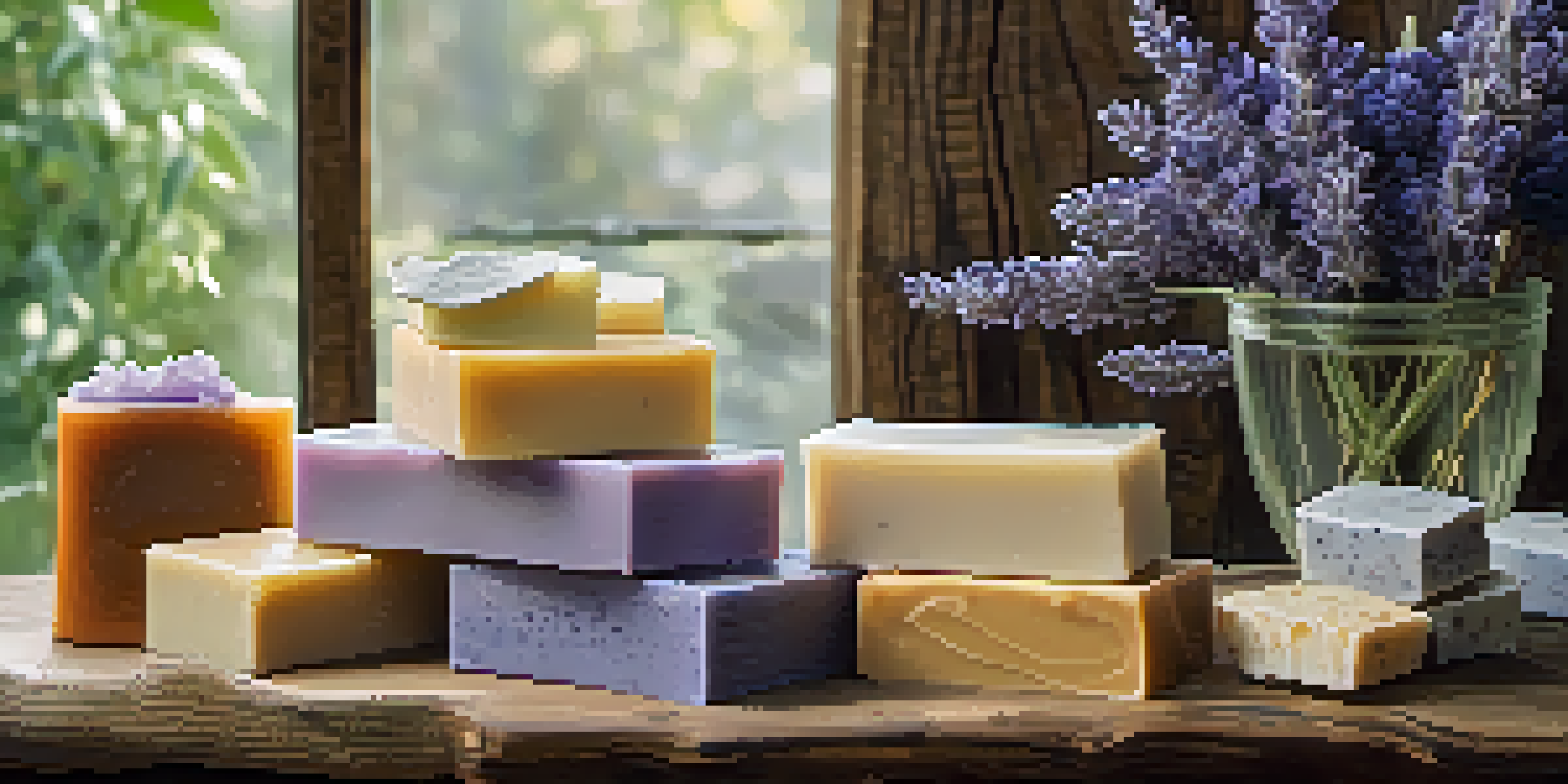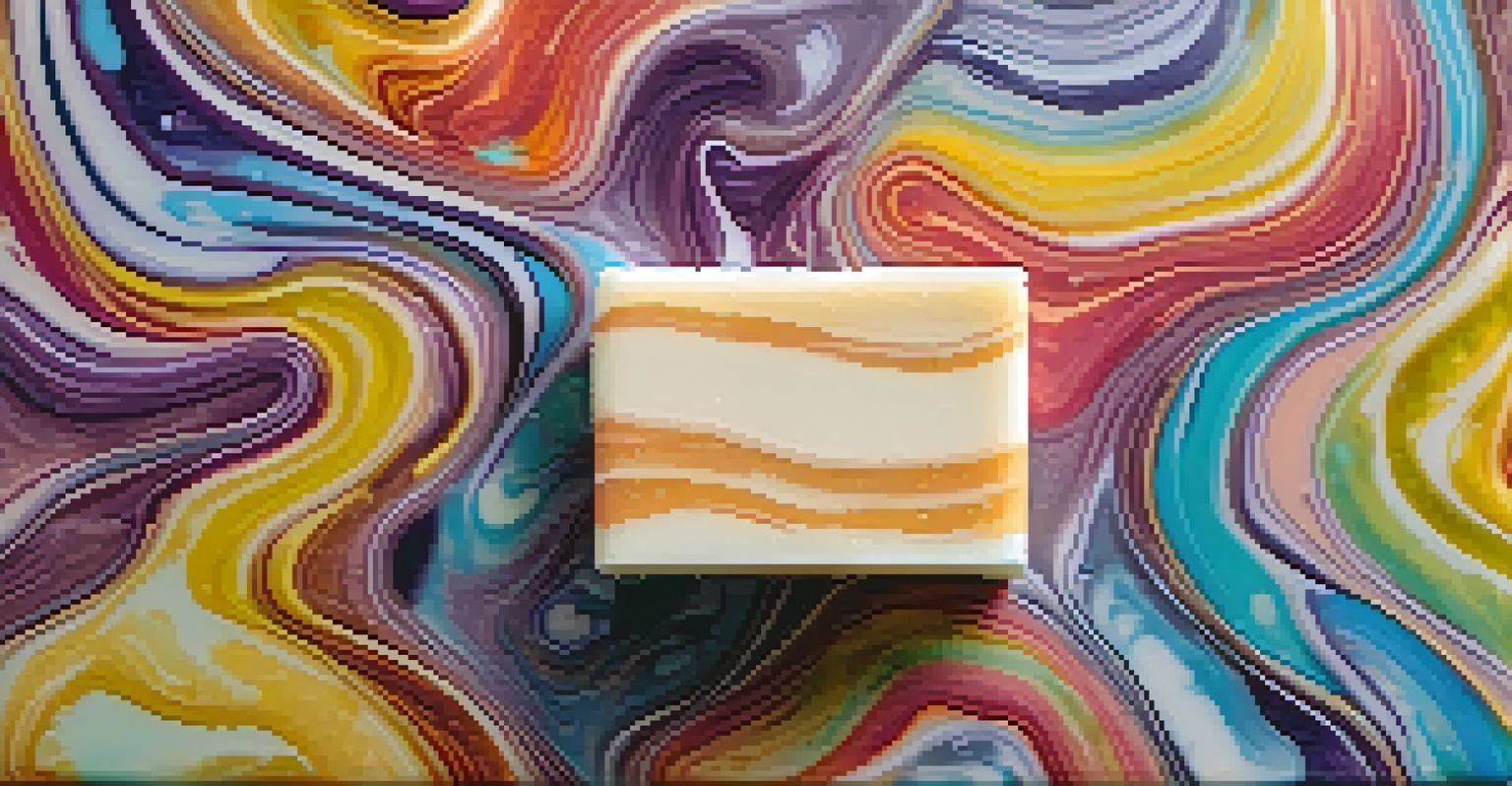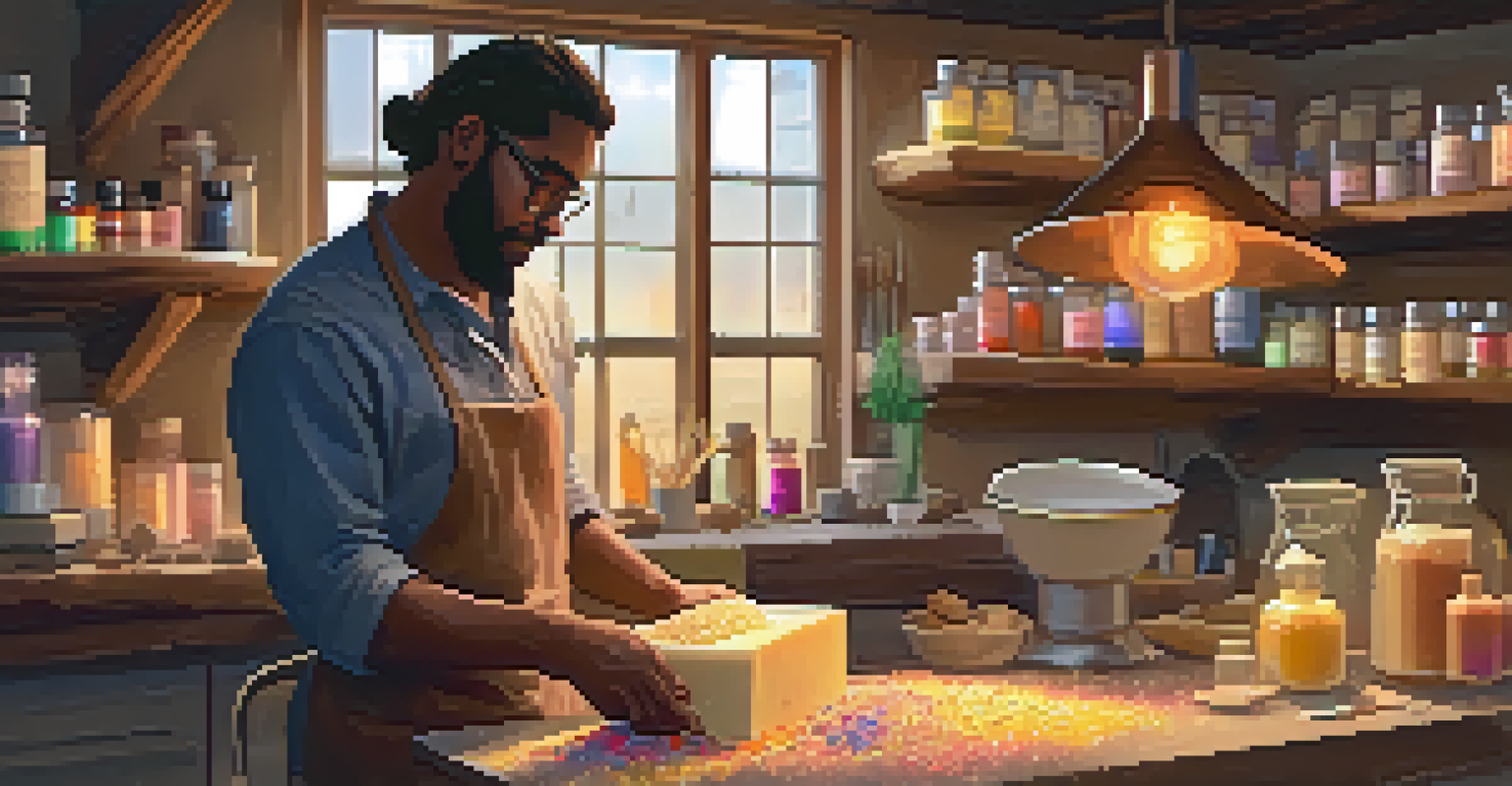Exploring the World of Artisan Soaps: Trends and Techniques

Understanding Artisan Soaps: What Makes Them Unique?
Artisan soaps stand out from commercial soaps due to their handcrafted nature and unique ingredients. Unlike mass-produced options, these soaps often prioritize quality over quantity, leading to a richer bathing experience. Artisans use natural oils, botanicals, and essential oils, creating products that are not only gentle on the skin but also offer various therapeutic benefits.
Natural soaps are about nourishing the skin, not just cleansing it.
Many artisan soap makers pride themselves on using sustainable practices and ethically sourced materials. This commitment to sustainability often resonates with consumers who are increasingly conscious of their environmental impact. By choosing artisan soaps, you're not just pampering yourself; you're also supporting small businesses and sustainable practices.
Moreover, the creativity involved in crafting these soaps is remarkable. Each batch can feature unique designs, colors, and scents, allowing makers to express their artistry. This personal touch is what makes artisan soaps more than just a cleansing product; they become a sensory experience that reflects the personality of the creator.
Current Trends in Artisan Soap Making
As we delve into the world of artisan soaps, various trends are shaping the industry. One notable trend is the rise of natural and organic ingredients, as consumers increasingly seek products free from synthetic chemicals. This shift not only benefits skin health but also aligns with a growing preference for eco-friendly and sustainable options.

Another trend is the incorporation of unique scents and innovative additives. From activated charcoal to exotic botanicals, soap makers are experimenting with diverse ingredients to create standout products. This not only elevates the bathing experience but also captures the curiosity of consumers looking for something new and exciting.
Artisan Soaps Emphasize Quality
Handcrafted artisan soaps prioritize unique ingredients and sustainable practices, offering a richer and more personalized bathing experience.
Lastly, the customization of soaps is gaining traction. Many artisans offer personalized options, allowing customers to choose scents, colors, and even shapes. This level of personalization makes the soap not just a product, but a memorable gift or personal indulgence, adding to the overall appeal of artisan soaps.
Techniques Behind Crafting Artisan Soaps
Creating artisan soap involves several techniques, each offering a different approach and result. Cold process soap making is one of the most popular methods, where fats and lye are combined at room temperature, allowing for intricate designs and a natural saponification process. This technique preserves the properties of the oils used, resulting in a nourishing bar of soap.
Artisan soaps reflect the creativity and passion of their makers, turning a simple bar into a work of art.
Hot process soap making is another fascinating technique. In this method, the soap mixture is heated, which accelerates the saponification process. This allows for quicker usage after crafting, making it a favorite among some artisans who want to reduce the wait time before their creations can be enjoyed.
Lastly, melt and pour soap making offers a beginner-friendly option. This technique involves melting a pre-made soap base and adding colorants and fragrances before pouring it into molds. It’s an excellent way for newcomers to experiment with different designs and ingredients without needing extensive knowledge of saponification.
The Role of Sustainability in Artisan Soap Production
Sustainability plays a crucial role in artisan soap production, as many makers are committed to eco-friendly practices. This includes sourcing natural ingredients and avoiding harmful chemicals that can impact both the environment and consumer health. By focusing on sustainable practices, artisans contribute positively to the planet while providing safe products for their customers.
Additionally, many artisans use recyclable or biodegradable packaging, reducing waste and promoting a greener lifestyle. This focus on sustainability not only appeals to environmentally-conscious consumers but also sets a standard for others in the beauty industry. It’s a win-win situation where both creators and users can feel good about their choices.
Trends Focus on Natural Ingredients
Current trends in artisan soap making highlight the use of natural and organic ingredients, innovative scents, and customizable options for consumers.
Furthermore, supporting artisan soap makers often translates to supporting local economies. Many of these creators source their ingredients from local suppliers, fostering community connections and promoting responsible sourcing. When you choose artisan soaps, you're not just purchasing a product; you're investing in a sustainable future.
Exploring Scents: Popular Fragrance Trends in Artisan Soaps
Scents play a pivotal role in the appeal of artisan soaps, and current trends highlight a mix of familiar and exotic fragrances. Classic scents like lavender and eucalyptus remain popular for their calming properties, while adventurous blends featuring spices or tropical fruits are gaining traction among consumers looking for something different. This variety ensures that there's a soap to match every mood and preference.
Moreover, many artisans are turning to essential oils, not just for their fragrances but also for their therapeutic benefits. For example, tea tree oil is celebrated for its antibacterial properties, making it a favorite in skincare routines. By incorporating these natural scents, artisans create soaps that are not just about aroma, but also about enhancing well-being.
Interestingly, seasonal scents are also trending, with many soap makers releasing limited-edition bars inspired by holidays or changing seasons. Think pumpkin spice in the fall or fresh citrus in the summer. These seasonal offerings create excitement and anticipation, encouraging customers to try new products throughout the year.
The Art of Packaging: Attracting Customers with Design
In the world of artisan soaps, attractive packaging can be just as important as the product itself. Many artisans understand that visually appealing designs not only draw attention but also reflect the quality of the soap inside. Unique packaging can tell a story, evoke a sense of luxury, or simply capture the essence of the ingredients used.
Eco-friendly packaging options are also becoming a priority. Consumers are increasingly looking for brands that prioritize sustainability, so many artisans are opting for recyclable materials or minimalistic designs. This approach not only appeals to eco-conscious buyers but also reinforces the brand's commitment to environmental responsibility.
Sustainability Drives Artisan Choices
Many artisan soap makers are committed to eco-friendly practices, from sourcing sustainable materials to using recyclable packaging, benefiting both consumers and the environment.
Additionally, creative labeling and branding can help artisan soap makers stand out in a crowded market. An eye-catching logo or a clever tagline can leave a lasting impression, encouraging repeat purchases. In a sense, the packaging becomes an extension of the artisan's story, inviting customers to engage with the brand on a deeper level.
Finding Your Perfect Artisan Soap: Tips for Consumers
With so many artisan soaps on the market, finding the perfect one can feel overwhelming. Start by considering your skin type and any sensitivities; for example, if you have dry skin, you might want to look for soaps made with moisturizing ingredients like shea butter or olive oil. Understanding your needs will help you narrow down your options effectively.
Next, don't hesitate to experiment with different scents and textures. Many artisan soap makers offer sample sizes or variety packs, making it easy to try out several options before committing to a larger purchase. This way, you can discover what truly resonates with you without the pressure of choosing a single bar right away.

Lastly, consider supporting local artisans by visiting farmers' markets or craft fairs. Not only does this give you the chance to see and smell the products firsthand, but it also allows you to connect with the makers themselves. These personal connections often lead to a better understanding of the products and the passion behind them, enriching your overall experience.